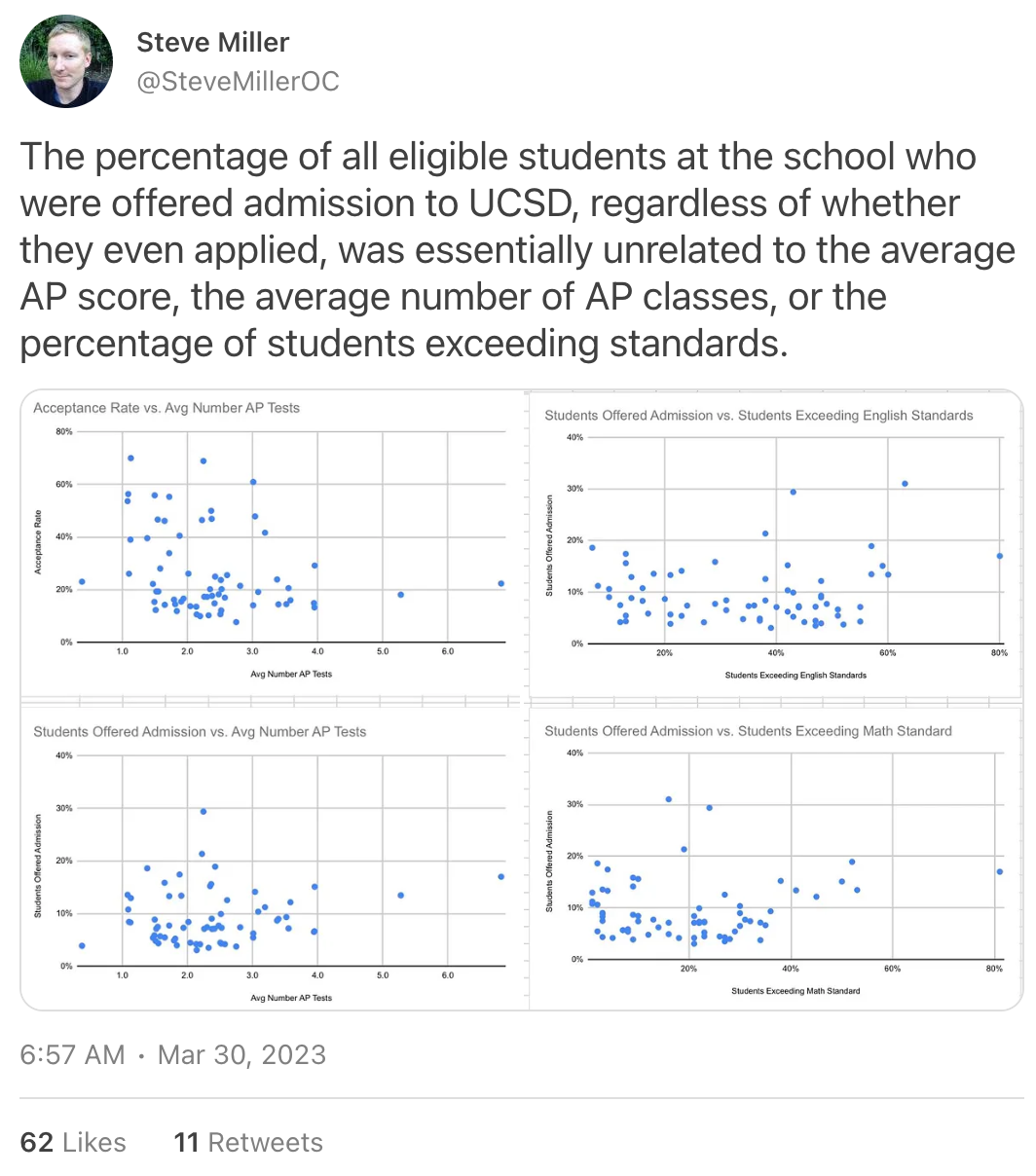
Is Boston Cooked?Oct 30
mayor wu is running a 100-year-old political playbook, choking housing development and fueling crime to please her base at the expense of the city's future
Apr 3, 2023

University of California San Diego (UCSD) admissions data recently unearthed by Orange County-based parent Steve Miller on Twitter suggests that despite California’s ban on affirmative action, the university is using applicants’ graduating high schools’ racial composition as a determining factor in the admissions process.
Miller found that there seemed to be no correlation between the percentage of students at a school offered admission to UCSD and the high school’s average AP score, number of AP classes, or percentage of students exceeding California Assessment of Student Performance and Progress (CAASP) standards.
